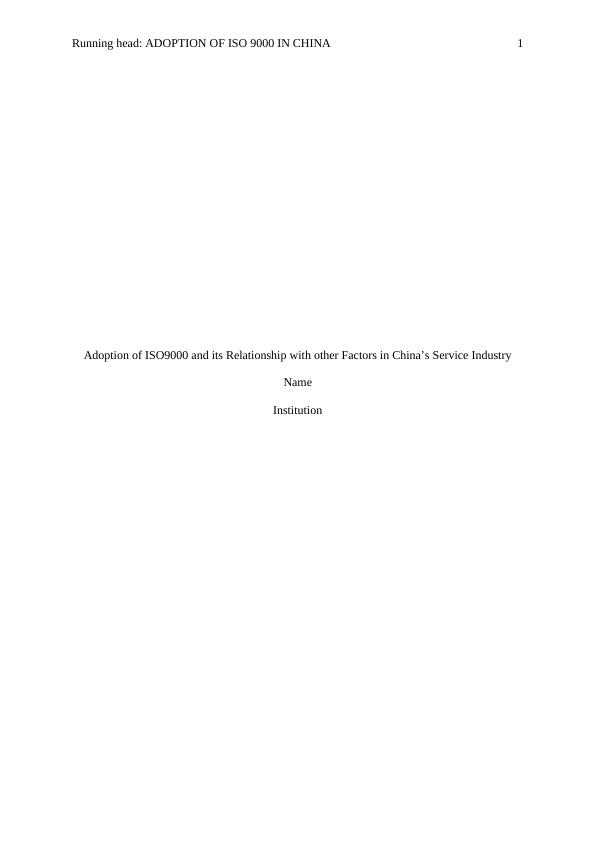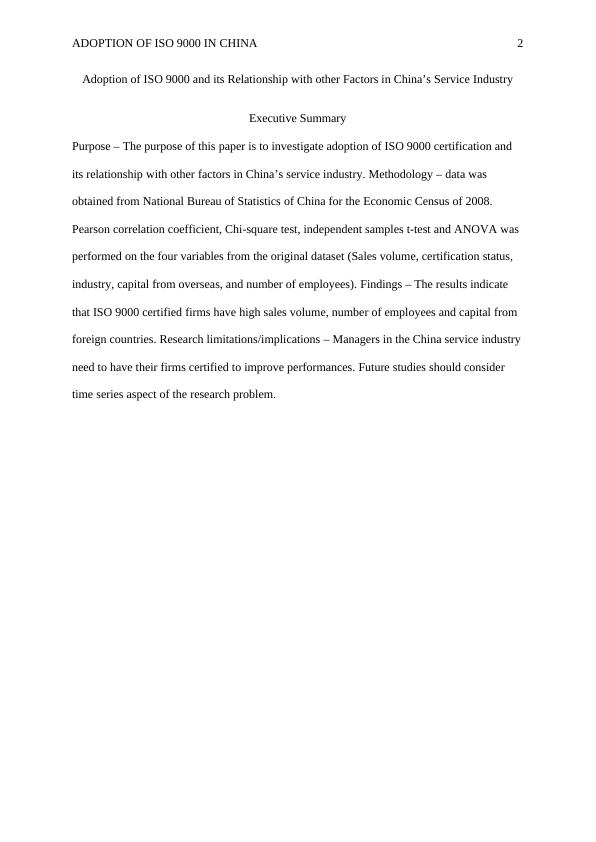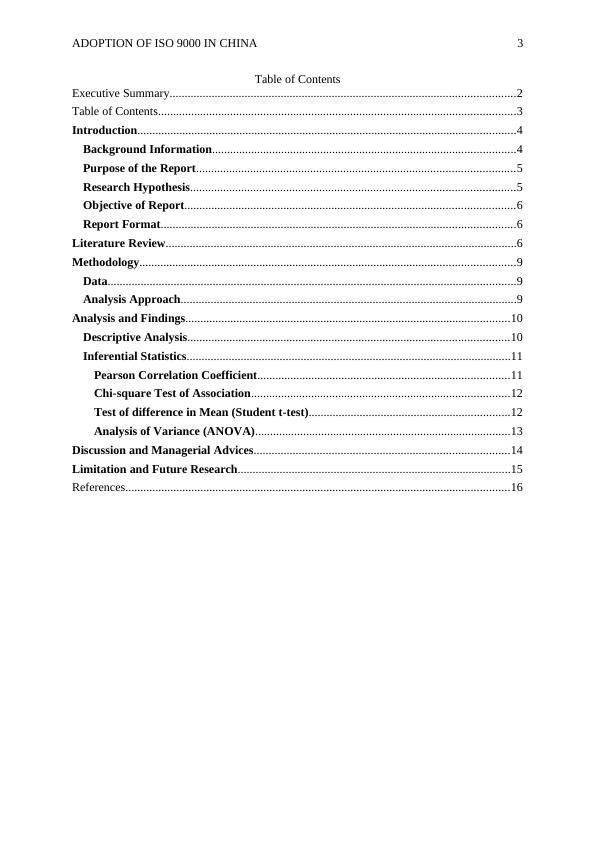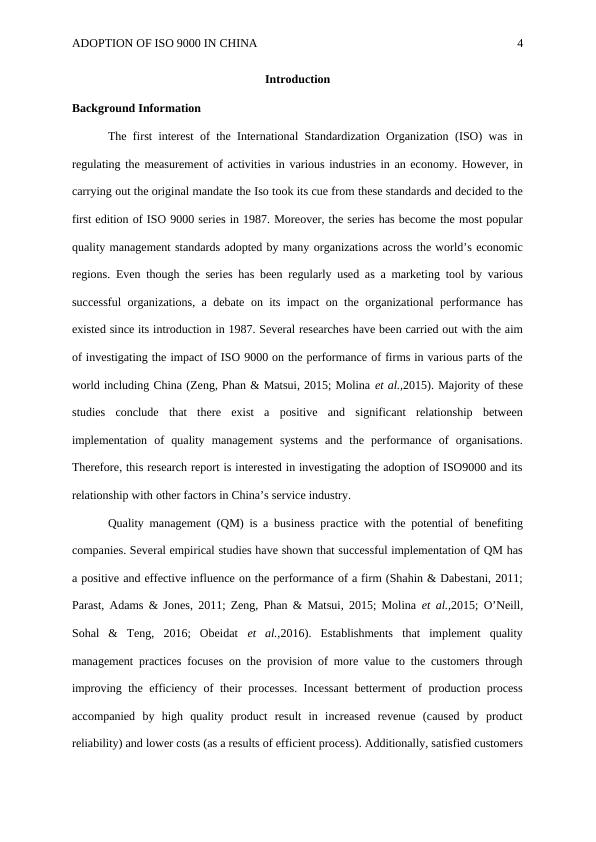Adoption of ISO 9000 in China
The assignment is about the adoption of ISO9000 and its relationship with other factors in China’s service industry. It includes a table with variables, their descriptions, and coding.
17 Pages3675 Words268 Views
Added on 2023-03-31
About This Document
This report investigates the adoption of ISO 9000 certification and its relationship with other factors in China’s service industry. The findings indicate that ISO 9000 certified firms have high sales volume, number of employees, and capital from foreign countries. The report includes a literature review, methodology, analysis and findings, and discussion and managerial advice.
Adoption of ISO 9000 in China
The assignment is about the adoption of ISO9000 and its relationship with other factors in China’s service industry. It includes a table with variables, their descriptions, and coding.
Added on 2023-03-31
ShareRelated Documents
End of preview
Want to access all the pages? Upload your documents or become a member.
Adoption of ISO9000 and its Relationship with other Factors in China’s Service Industry
|18
|1249
|400
Adoption of ISO9000 and its Relationship with other Factors in China’s Service Industry
|19
|3960
|305
Determinants of ISO 9000 Adoption and its Impact on Firm Performance
|18
|3943
|409
ISO 9000 certification in China Report 2022
|19
|3793
|13
Effects of ISO 9000 Certification on Revenue: An Empirical Analysis
|15
|1026
|409
Impact of ISO 9000 Certification in China
|50
|5886
|51




